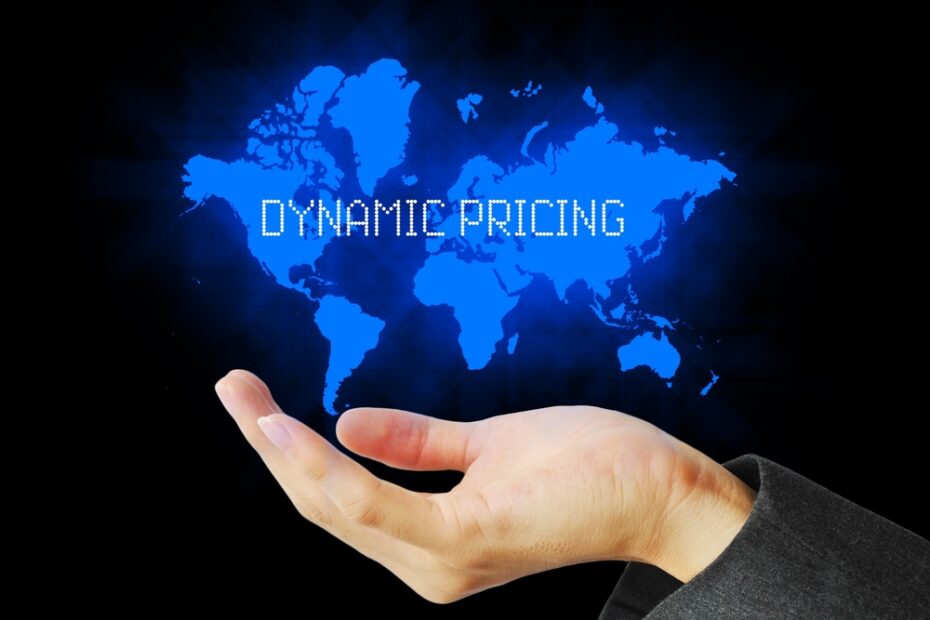Dynamic Pricing – What is it, and why does it matter?
Retailers of all varieties face one universal challenge: Just how do you set the price for a product to reap the best balance between margin and sales? This challenge is, of course, an age old task that demands comprehensive knowledge of the market, as well as always up-to-date insight into what your competitors are up to.
Dynamic pricing is a pricing strategy, where the price of the product or service is dependent on market demand. Typically a formula or business rule that takes into consideration supply and demand, competitor pricing and other market conditions, to calculate the optimum price for the product or service. So given the market conditions can change at anytime, dynamic pricing systems monitor and analyse these changes and automatically adjust the price of the product or service accordingly – i.e. the price is not fixed, it changes depending on market conditions.
You might not realise it but chances are you will have been on the receiving end of dynamic pricing if you’ve ever purchased a flight or a ticket to a theatre or sports event – the practice is quite common in these industries. In the example of the flight, the airline will most likely be ‘optimising’ the price based on the number of available seats, competitor prices and the departure date – as the number of seats available falls and the closer to the departure date – the higher the price.
Dynamic pricing: A little more detail
One of the beauties of Dynamic pricing is that the process is controlled in an automated way, by software agents that are known as pricing bots. These bots have a pretty demanding job; they are fed pre-set guidance based on business rules, upon which long equations (known as algorithms) are built and they then go forward to seek out data upon things such as market base location, the time of day or week, demand and competitor pricing. All of which can go towards data crunching on huge scales that analyses, assesses and defines just what a customer or vendor is willing to pay, adjusting the prices of a company’s products or services to suit.
Why does dynamic pricing matter?
As a consumer you might not be so comfortable with the idea that the price you are charged depends on conditions completely outside of your control. However if you really think about it, you’ve been dealing with dynamic pricing for as long as you’ve been consuming goods and services. From the flights and holidays you’ve booked to the petrol you consume, you’ve become accustomed to paying a different price each time – it’s all down to supply and demand.
Less obvious examples are the goods you purchase from a store or online.
There may be no better an example of just how effective dynamic pricing is than by taking a look at the most successful of businesses using this model: Amazon. The prices of this online monster are comprehensively managed by complex pricing bots, with products that automatically adjust as according to the supply and demand being experienced upon the site. For sellers this can mean streamlined sales, and for Amazon, this can mean maximised profits with products that sell at the top of the supply and demand pricing curve.
Dynamic pricing today: A consumer approved way of doing business
If you are a retailer, dynamic pricing makes absolute sense. If you have a limited supply of a product that is in demand then there is no need to discount – you can sell the product a full price and maximise your margins. On the other hand if you have a warehouse full of stuff that is not moving then it makes more sense to look at ways of increasing sales and price is often a useful tool to deploy in these circumstances.
And it’s not all bad for the consumer. Consumers who are not so tied to travel dates can benefit by getting deals on low cost flights during quieter periods, as well as deals on products that aren’t moving as fast as the retailer would like – supply and demand works both ways.
For dynamic pricing to be really effective however, you need to be able to analyse all the variables in real time, automatically – and that’s the catch – dynamic pricing needs big data and clever software. Fortunately there are low cost tools out there that can be deployed to help you.
Insitetrack are partners for some of the world’s leading retail companies. Our knowledge and advanced tools are enabling our clients to harness all that dynamic pricing can offer. Talk to us today about how we can help you to optimise your prices by implementing a more scientific approach to your pricing strategy.




